 |
RENAULT 4 ORIGINS & DERIVATIVES |
 |
 |
RENAULT 4 ORIGINS & DERIVATIVES |
 |
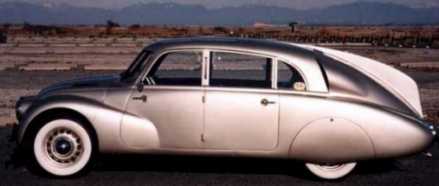
This is the Czech Tatra T87. It triggered off the events in the R4 story, but had nothing else to do with it.
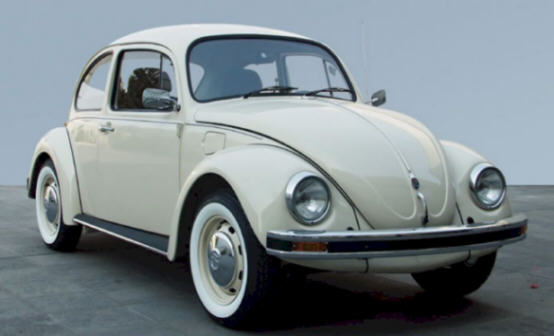
The Volkswagen Beetle sold 21,529,464, and ceased production in Mexico in July 2003. Dr. Ferdinand Porsche, its designer, wanted a German version of the Tatra T87. Its design took inspiration form the T87. Alternatively it is rumoured that the design was stolen from Hans Ledwinker, the designer of the Tatra who was imprisoned. The Beetle was originally produced in Wolfsburg, Germany. Also produced elsewhere in numerous other places including Dublin, where it was built in the same factory as the Renault 4.
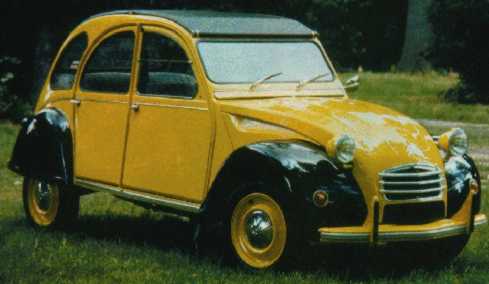
The CitroŽn 2CV was known as the TPV(s) (toutes petites voitures) during its early development. It brought ideas such as front wheel drive and independent suspension to the masses. The Renault 4 was conceived as a more modern competitor, more of a "car" and more appealing to export markets. CitroŽn responded to the Renault 4 by introducing the Ami-Break and then the Dyane.
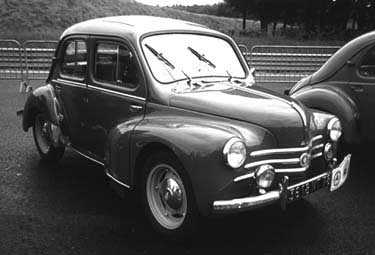
The Renault 4CV was first available in 1947. It came about as the French response to the Volkswagen Beetle. Over 1 million examples of this were produced, one of the first cars in Europe acheive this. It used the 747cc engine which was later used in Renault 4s. The Renault 4 replaced this car, and indeed took its name from it.
![]()
There are many cars which have derived from the Renault 4, in different ways. It could be said that there is some "Renault 4" in all hatchbacks and estates. These however are the cars that above all the others, are the closest relatives of the Renault 4.
![]()

The Renault 16 deservedly won car of the year in 1965. Its development overlapped and so many lessons learned during the gestation of the Renault 4 were incorporated. Following on the success of the Renault 4, it was decided to install a hatchback onto the Renault 16
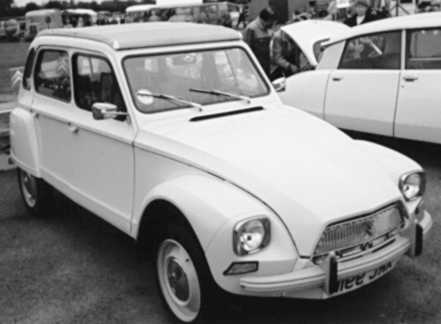
CitroŽn Dyane: After the R4's introduction, the 2CV's sales took a nosedive. CitroŽn decided to design a new car. However, through lack of funds, they were forced to carry over more of the 2CV than they would have liked. It attempted to take some of the features which made the Renault 4 successful, namely the rear hatch and the extra power. The Dyane enjoyed some moderate success. CitroŽn which had made several financial blunders was taken over by Peugeot. The car was outlived by the 2CV. Production ceased in summer '83.
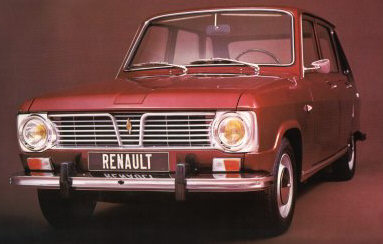
The Renault 6 was designed to sit between the Renault 16 and the Renault 4 in the range. It was designed to be more powerful and refined than the R4 so that it could be priced much higher. It was really a rebodied Renault 4 with slightly revised mechanicals. Early prototypes showed an update of the Renault 4 theme, but this was abandoned in favour of the new style first seen in the Renault 16.

The Renault 5: This car was created when a designer at Renault, Michel Bouť drew on a picture of a Renault 4. The new car used the rear door invented by the Renault 4, and was the single biggest step forward made by the company after the Renault 4. It was an immediate success, due to its completely modern and simple appearance, low price and excellent road manners.The cars have much in common, sharing most engines and suspension (apart from rear damper positions). It became one of the most successful Renaults ever, and very important for the company. It came in a saloon version (known as the Renault 7). In America, an altered version of the 5 was sold called the LeCar
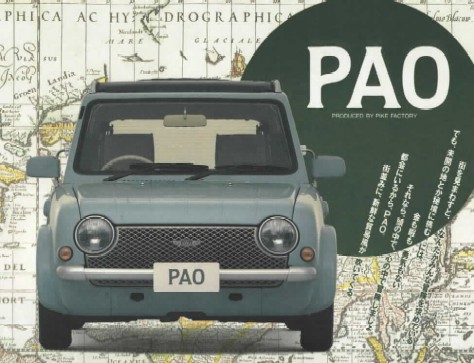
Nissan designed this car inspired by the Renault 4 in 1988. This model, the Pao, was based on the platform of the Nissan March. It was built as a limited edition for the Japanese market. The car sold out quickly. The Pao was a three door, and so in profile it resembles the Renault 4 the least. Unattractive though it may be, it is interesting to see how the original design was interpreted. Launched at the same time was the S-Cargo, a tribute to the Citroen 2CV. This was a similar exercise. Both projects had been run as a result of the success of the Be-1, a 1987 tribute to the BMC Mini. The Be-1 and the S-Cargo were both unattractive, but characterful cars too. Click on the link to Renault 4 from Nissan (near the bottom of the page) to see more of the Pao and the Be-1 and S-Cargo.
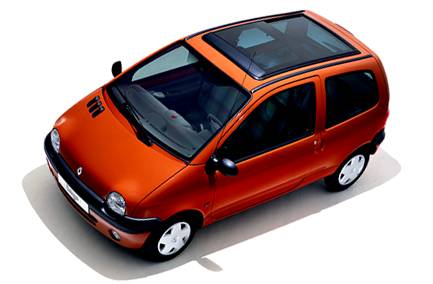
The Twingo was the final product of a project to find a suitable replacement for the Renault 4. Production commenced directly after R4 sales in Europe ceased. It is produced at factories in Flins (France) and Valladolid (Spain), both of which produced R4s. Initially, it used the Clťon engine, found in later R4s. The Twingo was designed with the same criteria as the R4: maximum interior space in minimum package (its packaging is unmatched even today), the constant changing of fashion, ride quality, practicality and simplicity. The Twingo proved a worthy successor. It pioneered the downsizing of the monospace format (in that it was the first to reach production, though the idea for this came from the FSO Beskid).
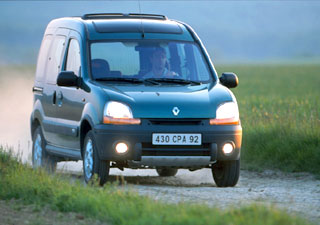
The Twingo was the R4's replacement, but it did not come in van version and it only had three doors. The Kangoo was designed as the replacement for the Express van and as a five-door car to fill that niche. It was marketed as the Renault 4's replacement. In Ireland it is called the Renault 4L Kangoo . The use of "4L" in the name was a marketing exercise to draw on the R4 reputation.
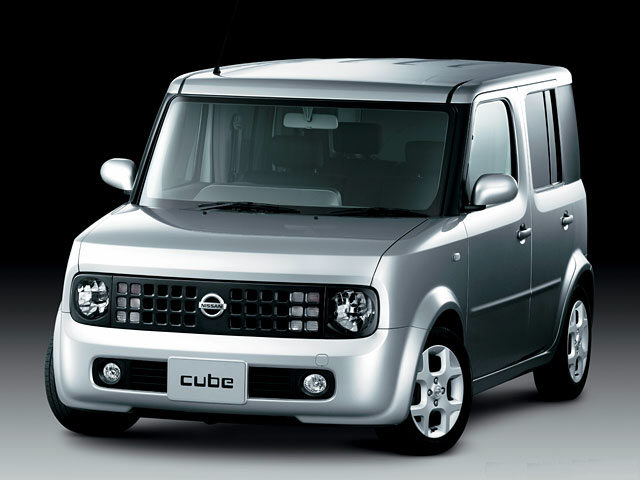
The Mk2 Nissan Cube was launched at the Tokyo motor show of 2002, and topped the Japanese sales charts soon after. Unlike the novelty Pao, the Cube is a full member of the Nissan line-up. Its concept has been likened to that of the Renault 4, and Nissan were recently applauded in Autocar magazine for drawing on the heritage of its partner Renault. It is an unconventionally designed car, and there are several similarities, including the grille and headlight treatment is to the post-1974 Renault 4. It features a dash-mounted gearchange which allows for a similar flat floor area in the front of the car. Click on the link to Renault 4 from Nissan (below) for more pictures and information on this amazing car.
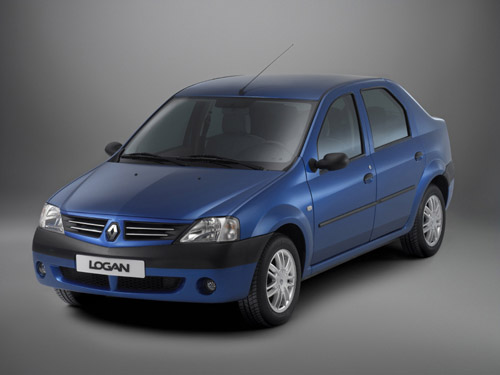
This is the new Renault Logan, probably the closest thing to a modern Renault 4. Like the Renault 4, it is built to be a very low priced, basic, but up to date car which would suit customers around the world. In 1998, the chairman of Renault Louis Schweitzer announced project X90, the development of a car with a very low target price of under Ä5000. In 2004, the fruits of X90 were presented as the Renault Logan. This car will be built in several countries as part of Renault's expansion and sold under Renault and Dacia brands. Dacia is a Romanian marque set up by the Government there in the 60's and began building Renaults then under license. It will come in saloon, estate, hatchback, van and pick-up versions. At the moment, it is not intended to offer this car in Western Europe. Similar to the Renault 4, the Logan is part of an expansion plan which will see Renault enter new markets and increase its output. A conservative estimate for this car would be to sell 700,000 vehicles per year.
![]()
Some independent Japanese firms built pastiches of the Renault 4, based around the second generation Nissan March and the Suzuki Lapin. There are some other striking similarities beween the 2002 Cube and the Renault 4, and some interesting information behind the project. For these and more pictures of the Pao, click below to go to:
![]()